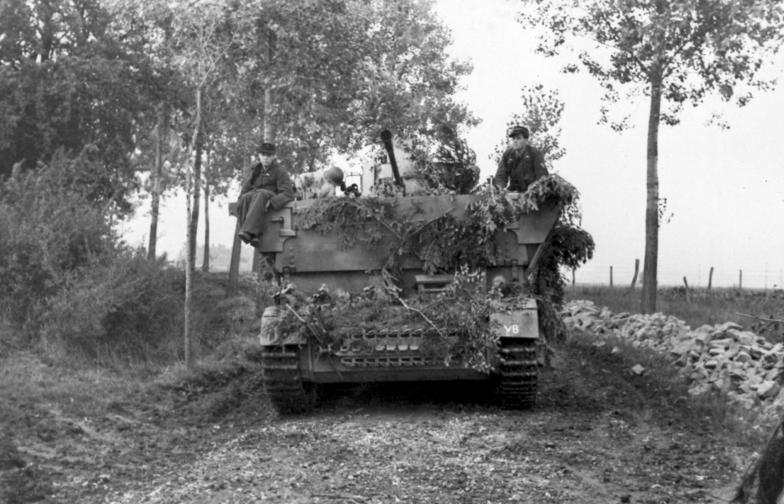Möbelwagen on:
[Wikipedia]
[Google]
[Amazon]
The 3.7 cm ''Flak auf Fahrgestell Panzerkampfwagen'' IV (sf) (''Sd.Kfz. 161/3''), nicknamed ''Möbelwagen'' ("Moving Van") because of its boxy shape, was a  In 1943, due to the waning ability of the
In 1943, due to the waning ability of the
Information about the Möbelwagen at Panzerworld
Surviving Panzer IV variants
- A PDF file presenting the Panzer IV variants (Jagdpanzer IV, Hummel, Nashorn, Brummbär, StuG IV, Flakpanzer tanks and prototypes based on Pz IV) still existing in the world {{DEFAULTSORT:Mobelwagen World War II self-propelled anti-aircraft weapons of Germany Military vehicles introduced from 1940 to 1944 de:Flakpanzer IV#Möbelwagen fr:Flakpanzer IV#Flakpanzer IV Möbelwagen
self-propelled anti-aircraft gun
An anti-aircraft vehicle, also known as a self-propelled anti-aircraft gun (SPAAG) or self-propelled air defense system (SPAD), is a mobile vehicle with a dedicated anti-aircraft capability.
Specific weapon systems used include machine guns, ...
built from the chassis of the Panzer IV
The ''Panzerkampfwagen'' IV (Pz.Kpfw. IV), commonly known as the ''Panzer'' IV, was a German medium tank developed in the late 1930s and used extensively during the Second World War. Its ordnance inventory designation was Sd.Kfz. 161.
The Panze ...
tank. It was used by the Wehrmacht
The ''Wehrmacht'' (, ) were the unified armed forces of Nazi Germany from 1935 to 1945. It consisted of the ''Heer'' (army), the ''Kriegsmarine'' (navy) and the ''Luftwaffe'' (air force). The designation "''Wehrmacht''" replaced the previous ...
in the European Theatre of World War II
The European theatre of World War II was one of the two main Theater (warfare), theatres of combat during World War II. It saw heavy fighting across Europe for almost six years, starting with Nazi Germany, Germany's invasion of Poland on 1 Sept ...
.
 In 1943, due to the waning ability of the
In 1943, due to the waning ability of the Luftwaffe
The ''Luftwaffe'' () was the aerial-warfare branch of the German ''Wehrmacht'' before and during World War II. Germany's military air arms during World War I, the ''Luftstreitkräfte'' of the Imperial Army and the '' Marine-Fliegerabtei ...
to combat enemy ground-attack aircraft, ground-based anti-aircraft weaponry was becoming increasingly important to the Wehrmacht. In early 1943, the idea of creating a gun platform on the chassis of the Panzer IV was first proposed. The prototype displayed to Hitler on December 7, 1943, used the '' 2 cm Flakvierling 38'', which was deemed too weak for the latest aircraft, which were constantly being improved to fly higher and faster. Only a single prototype with this gun was produced before the design was rejected. A second design with an upgraded single 3.7 cm Flak 43 L/89 was approved as a temporary stopgap until better ''Flakpanzers'' could be created. 240 ''Möbelwagens'' were built, and the first production models were put into service on the Western Front in April 1944.
The ''Möbelwagen'' was built on Panzer IV chassis that had been damaged on the Eastern Front and returned to the factory for repair. These were fitted with an open-top superstructure that provided the gun mount. Around this, four hinged 20 mm armored plates were placed. These plates had two operating positions: they could be lowered for full 360 degree traverse, allowing flat or low-level firing, or they could be half-closed, being pinned together to hang slightly open. In this position, they had notches that allowed the gun full rotation, but only for firing at airborne targets. Still, both of these positions left the crew extremely vulnerable. The fully closed position was only used for transport, when the plates would give the crew some protection from small arms fire and shrapnel.
Though the ''Möbelwagen'' was intended to be a stopgap, it served the anti-aircraft platoons of the Panzer Divisions on the Western Front. Only 240 were produced, and it was eventually succeeded by the first true ''Flakpanzers'': ''Wirbelwind
The ''Flakpanzer'' IV "''Wirbelwind''" (Whirlwind in English) was a German self-propelled anti-aircraft gun based on the Panzer IV tank. It was developed in 1944 as a successor to the earlier ''Möbelwagen'' self-propelled anti-aircraft gun.
In ...
'' and ''Ostwind
The ''Flakpanzer IV "Ostwind"'' (East Wind in English) was a German self-propelled anti-aircraft gun based on the Panzer IV tank. It was developed in 1944 as a successor to the earlier ''Flakpanzer IV/2 cm Vierling'' ''Wirbelwind''.
The Pa ...
'', both of which provided the crew with improved armored protection and full rotation when firing at either ground or air targets.
Comparable vehicles
*40M Nimród
The 40M Nimród was a World War II Hungarian self-propelled anti-aircraft gun based on a license-built copy of the Swedish Landsverk L-62 Anti I SPAAG but with a new turret, and developed independently. Originally, it was intended to be used bo ...
* Ostwind
The ''Flakpanzer IV "Ostwind"'' (East Wind in English) was a German self-propelled anti-aircraft gun based on the Panzer IV tank. It was developed in 1944 as a successor to the earlier ''Flakpanzer IV/2 cm Vierling'' ''Wirbelwind''.
The Pa ...
* M19 Multiple Gun Motor Carriage
The M19 Multiple Gun Motor Carriage (MGMC) was a World War II United States Army self-propelled anti-aircraft weapon on the M24 light tank chassis. It was equipped with two Bofors 40 mm guns. It was produced by Cadillac and Massey Ferguson ...
* Crusader Mk. III Anti-Aircraft Tank Mk. I
* ZSU-37
ZSU-37 was a Soviet-made, light, self-propelled anti-aircraft gun (SPAAG), developed by the end of 1943 and produced at Works No. 40 in Mytishchi. It was the first Soviet series-produced tracked SPAAG. ZSU stands for Zenitnaya Samokhodnaya Usta ...
References
External links
Information about the Möbelwagen at Panzerworld
Surviving Panzer IV variants
- A PDF file presenting the Panzer IV variants (Jagdpanzer IV, Hummel, Nashorn, Brummbär, StuG IV, Flakpanzer tanks and prototypes based on Pz IV) still existing in the world {{DEFAULTSORT:Mobelwagen World War II self-propelled anti-aircraft weapons of Germany Military vehicles introduced from 1940 to 1944 de:Flakpanzer IV#Möbelwagen fr:Flakpanzer IV#Flakpanzer IV Möbelwagen